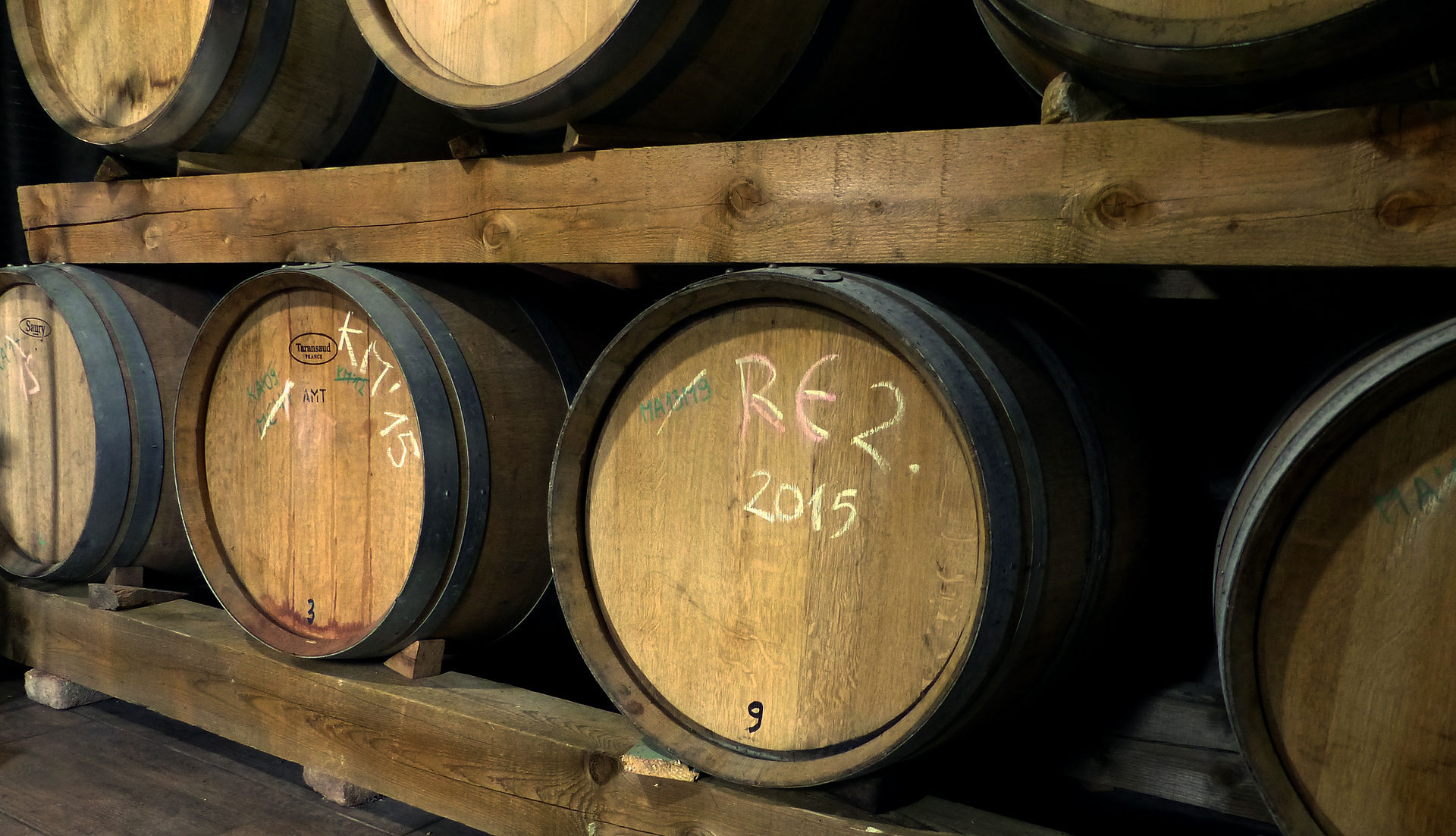
Pot od grozdja do vina
Vino, ki ga imamo v kozarcu, vsako leto začne svojo pot v vinogradu, od tam pa se mora z zdravim in zrelim grozdjem prenesti v klet. Med trgatvijo že v vinogradu skrbno odbiramo in v zabojček polagamo le zdrave grozde. Slabše dele in tiste, ki žal sami niso zmogli postati popolni, sproti odstranimo. Ker nobeno sadje ne dozori hkrati, tudi vinograde z pomočjo izurjenih trgačev obiramo dvakrat.
Pričnemo navsezgodaj zjutraj in zaključimo pred morebitno dnevno vročino.
Fermentacija moštov se začne vedno spontano, s pomočjo lastnih kvasovk, brez predhodnega bistrenja. Poteka počasi, brez uporabe kakršnihkoli drugih dodatkov, hranil in zato tudi brez hlajenja. Po pretoku belim vinom pustimo, da se ob minimalni količini žvepla razvijajo dve, včasih tri leta.


Bela vina s podaljšano maceracijo (t.i. oranžna vina) potrebujejo nekaj več časa, da dozorijo. V rabljenih hrastovih in akacijevih barikih njihovo izboljševanje spremljamo tri do štiri obdobja.

Vino je živo in za svoj razvoj ne potrebuje kontrolirane, konstantne idealne temperature. Napreduje v ritmu narave in njene biodinamike - ko je hladneje se stabilizira, ko je topleje pa zori.

Pred pričetkom prodaje vino odleži v kleti še vsaj tri do šest mesecev, da se vino stabilizira. Ob naročilu vin steklenice sproti ročno etiketiramo, zapakiramo in dostavimo, oziroma pošljemo.





